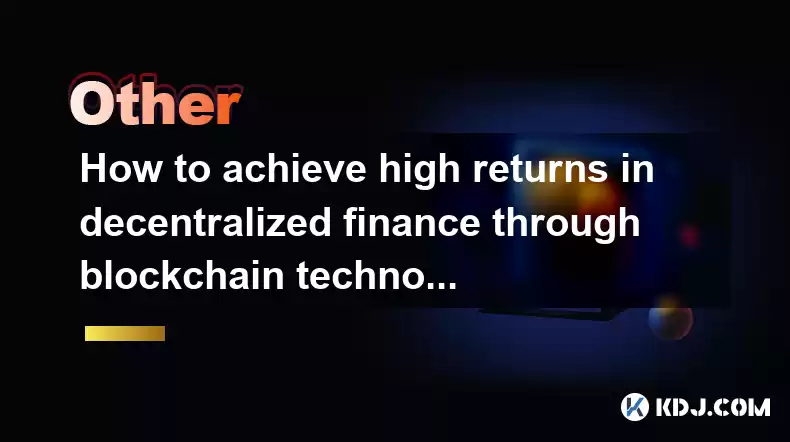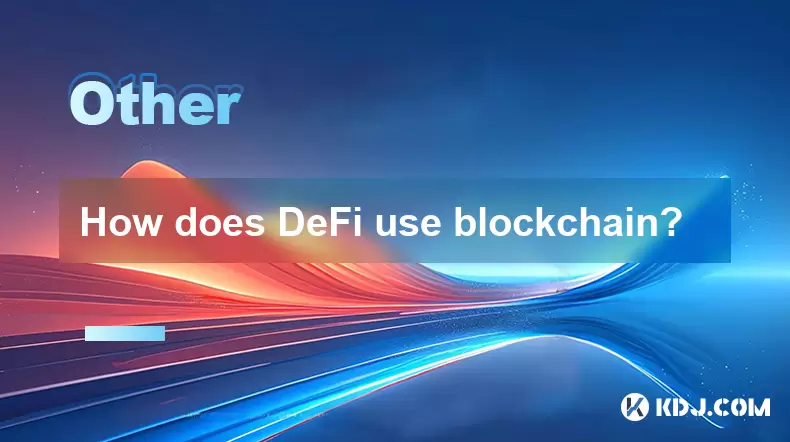-
 Bitcoin
Bitcoin $114400
1.85% -
 Ethereum
Ethereum $3496
2.62% -
 XRP
XRP $2.916
4.75% -
 Tether USDt
Tether USDt $0.9999
0.02% -
 BNB
BNB $751.9
1.74% -
 Solana
Solana $161.2
2.07% -
 USDC
USDC $0.9998
0.00% -
 TRON
TRON $0.3263
1.56% -
 Dogecoin
Dogecoin $0.1987
3.05% -
 Cardano
Cardano $0.7251
4.06% -
 Hyperliquid
Hyperliquid $38.43
4.78% -
 Stellar
Stellar $0.3966
8.00% -
 Sui
Sui $3.431
3.15% -
 Chainlink
Chainlink $16.27
4.03% -
 Bitcoin Cash
Bitcoin Cash $543.3
3.53% -
 Hedera
Hedera $0.2480
8.38% -
 Ethena USDe
Ethena USDe $1.001
0.03% -
 Avalanche
Avalanche $21.38
2.30% -
 Toncoin
Toncoin $3.640
3.41% -
 Litecoin
Litecoin $109.2
3.30% -
 UNUS SED LEO
UNUS SED LEO $8.956
-0.15% -
 Shiba Inu
Shiba Inu $0.00001219
3.22% -
 Polkadot
Polkadot $3.602
3.15% -
 Uniswap
Uniswap $9.153
4.03% -
 Monero
Monero $301.2
3.86% -
 Dai
Dai $0.9999
-0.01% -
 Bitget Token
Bitget Token $4.320
1.80% -
 Pepe
Pepe $0.00001046
4.06% -
 Cronos
Cronos $0.1321
5.83% -
 Aave
Aave $259.0
3.73%
How to achieve high returns in decentralized finance through blockchain technology?
DeFi offers high returns through yield farming, staking, and liquidity mining on blockchain platforms, but managing risks is crucial for success.
Apr 16, 2025 at 09:57 am

Achieving high returns in decentralized finance (DeFi) through blockchain technology involves understanding the various opportunities and strategies available within the DeFi ecosystem. DeFi leverages blockchain technology to create financial instruments without the need for traditional intermediaries like banks, offering users the potential for high returns through various methods such as yield farming, staking, and liquidity provision. This article will explore how to navigate these opportunities to maximize returns while managing the associated risks.
Understanding DeFi and Blockchain Technology
Decentralized Finance (DeFi) refers to a financial system built on blockchain technology, which allows for peer-to-peer financial transactions without centralized authorities. Blockchain technology is the underlying technology that enables these transactions to be secure, transparent, and immutable. By understanding the basics of DeFi and blockchain, you can better navigate the various platforms and protocols that offer high-return opportunities.
Yield Farming: Maximizing Returns through Liquidity Provision
Yield farming is one of the most popular methods to achieve high returns in DeFi. It involves providing liquidity to a DeFi protocol in exchange for rewards, often in the form of the protocol's native token. To start yield farming:
- Choose a DeFi platform: Research and select a reputable DeFi platform that offers yield farming opportunities. Examples include Uniswap, SushiSwap, and Curve Finance.
- Connect your wallet: Use a compatible cryptocurrency wallet like MetaMask to connect to the DeFi platform.
- Select a liquidity pool: Identify a liquidity pool that aligns with your risk tolerance and return expectations. Pools often consist of pairs of tokens, such as ETH/USDT.
- Deposit your tokens: Provide the required tokens to the liquidity pool. The amount you deposit will determine your share of the pool and the rewards you earn.
- Monitor and manage your position: Regularly check your position to ensure it remains profitable. Be prepared to adjust your strategy based on market conditions and protocol changes.
Staking: Earning Passive Income from Blockchain Networks
Staking is another way to achieve high returns in DeFi by participating in the validation process of a blockchain network. Staking involves locking up your cryptocurrencies to support the operations of a blockchain, and in return, you receive rewards. To start staking:
- Choose a blockchain network: Select a blockchain that supports staking, such as Ethereum 2.0, Cardano, or Tezos.
- Select a staking platform: Use a staking platform or a decentralized application (dApp) that supports the chosen blockchain. Examples include Lido for Ethereum and Daedalus for Cardano.
- Transfer your tokens: Move the required amount of tokens to the staking platform or dApp.
- Stake your tokens: Follow the platform's instructions to stake your tokens. This usually involves selecting a validator or pool to delegate your stake to.
- Monitor your rewards: Keep track of the rewards you earn and consider reinvesting them to compound your returns.
Liquidity Mining: Earning Tokens by Providing Liquidity
Liquidity mining is similar to yield farming but often involves newer DeFi protocols that incentivize users to provide liquidity by offering their native tokens as rewards. To participate in liquidity mining:
- Research new DeFi protocols: Look for newly launched DeFi protocols that offer liquidity mining opportunities. These can be found on platforms like DeFi Pulse or CoinGecko.
- Assess the risks and rewards: Evaluate the potential returns against the risks, such as the protocol's security and the volatility of the rewards token.
- Connect and deposit: Use your cryptocurrency wallet to connect to the protocol and deposit the required tokens into the liquidity pool.
- Claim your rewards: Regularly claim the rewards you earn, and consider whether to hold, sell, or reinvest them.
Risk Management in DeFi
While the potential for high returns in DeFi is attractive, it comes with significant risks. Risk management is crucial to protect your investments and maximize your returns. Consider the following strategies:
- Diversify your investments: Spread your investments across different DeFi protocols and strategies to reduce the impact of any single failure.
- Stay informed: Keep up-to-date with the latest developments in the DeFi space, including protocol updates, security audits, and market trends.
- Use secure platforms: Only use reputable and audited DeFi platforms to minimize the risk of hacks and scams.
- Set stop-losses: Consider setting stop-loss orders to automatically sell your positions if they fall below a certain threshold, helping to limit potential losses.
Tools and Resources for DeFi Investors
To succeed in DeFi, it's essential to use the right tools and resources. DeFi aggregators like Zapper and DeBank can help you manage your DeFi positions across multiple platforms. Analytics platforms such as DeFi Pulse and The Graph provide valuable insights into the performance and health of DeFi protocols. Additionally, educational resources like DeFi tutorials on YouTube and blogs can help you stay informed and make better investment decisions.
Frequently Asked Questions
Q: What is the difference between yield farming and staking in DeFi?
A: Yield farming involves providing liquidity to DeFi protocols in exchange for rewards, often in the form of tokens. It typically requires active management and can be more volatile. Staking, on the other hand, involves locking up your tokens to support a blockchain network's operations, earning you rewards in the form of additional tokens. Staking is generally considered less risky and more passive than yield farming.
Q: How can I minimize the risks associated with DeFi investments?
A: To minimize risks in DeFi, diversify your investments across different protocols and strategies, stay informed about the latest developments, use secure and audited platforms, and consider setting stop-loss orders to limit potential losses.
Q: Are there any tools that can help me manage my DeFi investments more effectively?
A: Yes, several tools can help you manage your DeFi investments more effectively. DeFi aggregators like Zapper and DeBank allow you to track and manage your positions across multiple platforms. Analytics platforms such as DeFi Pulse and The Graph provide insights into the performance and health of DeFi protocols. Additionally, educational resources like DeFi tutorials on YouTube and blogs can help you stay informed and make better investment decisions.
Q: Can I participate in DeFi without technical knowledge?
A: While having technical knowledge can be beneficial, it's not strictly necessary to participate in DeFi. Many platforms offer user-friendly interfaces and tutorials to help beginners get started. However, it's important to educate yourself about the basics of blockchain technology and DeFi to make informed investment decisions and manage risks effectively.
Disclaimer:info@kdj.com
The information provided is not trading advice. kdj.com does not assume any responsibility for any investments made based on the information provided in this article. Cryptocurrencies are highly volatile and it is highly recommended that you invest with caution after thorough research!
If you believe that the content used on this website infringes your copyright, please contact us immediately (info@kdj.com) and we will delete it promptly.
- Bitcoin Price Wobbles: Options Analysis Points to Bullish Undercurrent Despite Dip
- 2025-08-04 04:30:12
- Ark Invest, Coinbase, and Bitcoin: Decoding the Crypto Investment Landscape in NYC
- 2025-08-04 04:30:12
- LILPEPE, Cardano, and Shiba Inu: The 2025 Crypto Landscape
- 2025-08-04 04:50:12
- Cold Wallet, Token Rewards, and Crypto Usage: A New Era?
- 2025-08-04 04:50:12
- Navigating the Wild West: Token Unlocks and Altcoin Surges - A Trader's Guide
- 2025-08-04 02:30:11
- AI, Crypto, and the Frontier: Riding the Wave of Innovation
- 2025-08-04 03:50:11
Related knowledge

What is the difference between on-chain and off-chain transactions?
Aug 02,2025 at 04:22pm
Understanding On-Chain TransactionsOn-chain transactions refer to digital asset transfers that are recorded directly on a blockchain ledger. These tra...

What is a node's role in a blockchain network?
Aug 03,2025 at 03:16pm
Understanding the Function of a Node in a Blockchain NetworkA node is a fundamental component of any blockchain network, acting as a participant that ...

How are transactions verified on a blockchain?
Aug 04,2025 at 12:35am
Understanding the Role of Nodes in Transaction VerificationIn a blockchain network, nodes are fundamental components responsible for maintaining the i...

What is the double-spending problem and how does blockchain prevent it?
Aug 02,2025 at 01:07pm
Understanding the Double-Spending ProblemThe double-spending problem is a fundamental challenge in digital currency systems where the same digital tok...

What is the difference between a blockchain and a database?
Aug 01,2025 at 09:36pm
Understanding the Core Structure of a BlockchainA blockchain is a decentralized digital ledger that records data in a series of immutable blocks linke...

How does DeFi use blockchain?
Aug 03,2025 at 11:15pm
Understanding the Role of Blockchain in DeFiDecentralized Finance (DeFi) relies fundamentally on blockchain technology to operate without intermediari...

What is the difference between on-chain and off-chain transactions?
Aug 02,2025 at 04:22pm
Understanding On-Chain TransactionsOn-chain transactions refer to digital asset transfers that are recorded directly on a blockchain ledger. These tra...

What is a node's role in a blockchain network?
Aug 03,2025 at 03:16pm
Understanding the Function of a Node in a Blockchain NetworkA node is a fundamental component of any blockchain network, acting as a participant that ...

How are transactions verified on a blockchain?
Aug 04,2025 at 12:35am
Understanding the Role of Nodes in Transaction VerificationIn a blockchain network, nodes are fundamental components responsible for maintaining the i...

What is the double-spending problem and how does blockchain prevent it?
Aug 02,2025 at 01:07pm
Understanding the Double-Spending ProblemThe double-spending problem is a fundamental challenge in digital currency systems where the same digital tok...

What is the difference between a blockchain and a database?
Aug 01,2025 at 09:36pm
Understanding the Core Structure of a BlockchainA blockchain is a decentralized digital ledger that records data in a series of immutable blocks linke...

How does DeFi use blockchain?
Aug 03,2025 at 11:15pm
Understanding the Role of Blockchain in DeFiDecentralized Finance (DeFi) relies fundamentally on blockchain technology to operate without intermediari...
See all articles

























































































